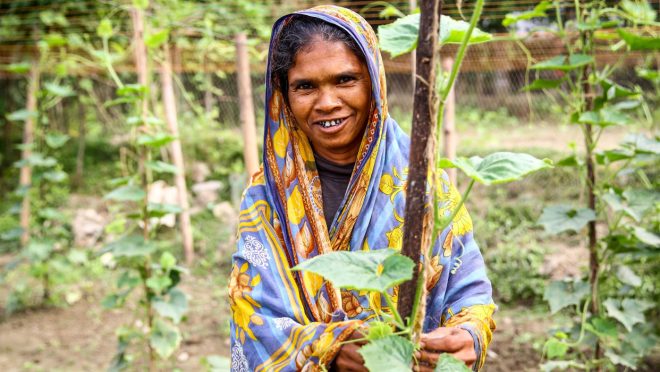International Day of Rural Women: Equality begins in the village
International Day of Rural Women: Equality begins in the village

15 October is International Day of Rural Women. Our society still has a long way to go when it comes to ensuring progress for women, let alone women living in rural areas around the world. The world’s rural population is responsible for crop and vegetation production, and among that population, 48% of the active labour force are women, and this number increases to 58% in Bangladesh, according to the Bangladesh Bureau of Statistics. Therefore, ensuring a safe and equal environment for these women is a must to build an equitable society.
The prevailing society
The patriarchal structure holds a strong grip on society. As we transitioned from an agrarian society to a city-dwelling one, some aspects of patriarchy may have eased to meet a few equitable expectations, but the vast number of women who are educated, financially capable, and urbanised still do not have a level playing field in terms of the job market and social empowerment.
The condition in this regard for rural women is much worse. Society, especially in Bangladesh, has failed to uphold the guiding principles needed to ensure an equitable society. Although the participation of women in the workforce is praiseworthy, their standard of living and opportunities for growth are not up to the mark.
Various factors are at play when it comes to keeping rural women behind. First of all, the state has not been able to ensure free and attainable primary and secondary education. Spending a little under 2% of GDP, Bangladesh is well behind the standard when it comes to investing in educational infrastructure. This has a negative effect because, in order to break the stigma and dogmatism attached to rural life, there is no alternative to education.
Secondly, the nature of cultural acceptance weighs heavily on rural women. When it comes to working in the field or managing a family farm, women have proven themselves tenfold. However, many derogatory norms and customs of land distribution and inheritance ensure that women are deprived of capital and wealth. This lack of property rights, outdated laws, and the absence of the state’s influence in rural traditions mean that there is no protection for women, even if the law of the land provides them with equal rights.
The need for change
Recognising the deeply rooted problems, the UN has adopted 15 October as the International Day of Rural Women. In Bangladesh, the UN, along with the Government of Bangladesh, is currently undertaking a programme titled SWAPNO (Strengthening Women’s Ability for Productive New Opportunities).
This programme aims to enable local government and direct educational institutions to support rural women’s development. It targets ultra-poor rural women (widowed, divorced, abandoned, etc.), gives them paid work (public works/community services), skills training, and links to employment, including formal/informal SME sectors. It also supports savings and future income generation and helps build self-employment.
Two districts of Bangladesh are currently under this programme: Kurigram District (northwest Bangladesh) – an area affected by seasonal hunger and river erosion, and Satkhira District (southwestern coastal belt) – an area affected by natural disasters and climate change. These regions have high poverty rates and food shortages, making the women extremely vulnerable.
Women are employed for 18 months in maintaining or rehabilitating community assets and public works (roads, embankments, etc.). After employment, they are linked to micro-enterprises or formal jobs through skills and enterprise training. Participants are expected to graduate from extreme poverty with sustainable livelihoods.
Programmes such as these are paramount in improving the lives of rural women. However, these are in no way enough, as without state intervention in education and legislation, these efforts are not expected to be fruitful in their goal. Therefore, it is imperative that the government bears the responsibility to ensure proper development and move beyond the outdated mindset of merely allocating budgets rather than seeing through their proper implementation and impact.


